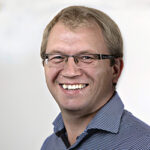Are residual raw materials from chicken the key to greener salmon feed?

How can we increase the utilization of the leftovers from chicken production in feed for salmon? This is what a new Norwegian research project, which started on 1 October 2024, will provide the answer to.
With poultry meal as a potential replacement for soy in salmon feed, the project can both reduce greenhouse gas emissions and promote a more circular economy in the food industries. While processed animal proteins are already used in salmon feed in other countries, European salmon farmers have so far been reluctant to take it into their feed formulations.
“If we succeed, the Norwegian salmon industry will have a new alternative, either to fishmeal, which is a limited resource, or to soy protein concentrate, which is the component of salmon feed that is usually attributed to the heaviest climate footprint,” says project manager Bjarne Hatlen, senior scientist at Nofima.

From food waste to salmon food
In today’s salmon feed, over 70 percent of the protein is from vegetable sources. The most important is soy, which requires significant land areas and resources. By upgrading residual raw materials from chicken production to salmon feed, you can both reduce the environmental footprint and create value locally.
The project is about more than fish feed. Consumer attitudes are also crucial. Many people may ask themselves: “Is it okay for salmon to eat chicken?” But we do not know how concerned consumers actually are about this. By asking European consumers, the researchers behind the project hope to gain more knowledge about their attitudes towards new raw materials such as chicken meal, and how these are affected when they receive information about how residual raw materials from chicken can contribute to both safe food, better resource utilisation and a smaller footprint.
The development of new feed raw materials is a priority task for several of the actors participating in the research project. In order to help achieve the Norwegian government’s environmental and climate goals, it is important to find new alternatives that can be used in Norwegian salmon feed. A participant in the reference group emphasizes this:

“We need to think new and big if we are to achieve the climate goals, and animal residues are a resource that is nutritionally well suited to salmon feed and is already used in feed in other parts of the world. Making fish feed even more sustainable is Cargill’s most important contribution to increasing the production of sustainable and healthy Norwegian seafood for a growing world population,” says Ted Andreas Mollan, Category Manager for Raw Material Supply from Cargill.
Chicken Meal: A Promising and Accessible Option for Norwegian Salmon Feed?
The Norwegian Government’s social mission for sustainable feed has accelerated development. The authorities and the business community are now working together to find innovative solutions that can reduce the climate footprint for the industry.

“For example, insects, tunicates, mussels, bacteria and yeast. Many of these have a long way to go before they can be produced in volumes and at a price that is interesting for salmon feed producers,” says Hatlen and continues:
“Animal by-products from the land, such as poultry meal, stand out from the other new raw materials in that they are already available in large volumes. Nevertheless, there is still some research that can remove the last obstacles for the Norwegian salmon industry to start using it”.
But despite the great potential, Hatlen points to two challenges in particular that must be solved before chicken meal can become a natural part of Norwegian salmon feed: the digestibility of the chicken meal offered is variable and often too low in salmon, and we lack knowledge about consumer acceptance of salmon fed with chicken meal.
A collaboration with high ambitions and high utility value
The project extends over three years, and brings together players from important parts of the value chain: Nofima, Mowi Feed, Nutrimar, and NCE Seafood Innovation make up the project participants, while Cargill, the Norwegian Seafood Council and Cermaq are part of the reference group. Together, they will work towards a common goal: To facilitate increased utilization of chicken residues in feed for salmon, a solution that can be important for the aquaculture industry.

“This is an important project for the aquaculture industry that will provide insight into barriers to using the poultry meal and build a basis for commercial exploitation of the results,” explains Solveig Holm, project manager at NCE Seafood Innovation.
The Norwegian Seafood Research Fund (FHF) has financed most of the project, with contributions from partners Mowi Feed and Nutrimar. With a budget of NOK 18 million and a strong team, the ambitions are high.
“We will work at both ends of the value chain, and research both raw material processing and customers’ attitudes towards the salmon that has eat poultry meal. But the benefit is just as great for the links between them, such as feed producers and fish farmers,” Hatlen concludes.
